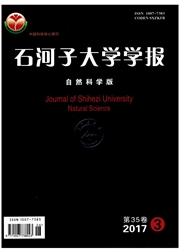

 中文摘要:
中文摘要:
聚氯乙烯(PVC)是使用最广泛的塑料制品之一,氯乙烯单体(VCM)被应用于合成聚氯乙烯。由于中国贫油、多煤的资源结构,乙炔氢氯化反应被广泛应用于合成氯乙烯单体。本研究以碳修饰的SBA-15型分子筛为载体制备1%Au Cl3/C-SBA-15催化剂,该催化剂对于乙炔氢氯化反应的反应条件如下:反应温度为180℃,体积空速为150h-1,HCl与C2H2的填充比为1.15。通过透射电镜、比表面积测试仪、傅里叶红外仪和拉曼光谱仪等对该催化剂的结构特征和表面形貌进行表征,结果表明:碳被成功地掺杂在SBA-15表面;碳层的存在明显提高了催化剂在乙炔氢氯化反应中的催化活性,并且延长了催化寿命,1%Au Cl3/4C-SBA-15的乙炔转化率可以达到90%。采用X射线衍射(XRD)、比表面积测试法(BET)以及热重分析(TGA)分析催化剂的失活原因,结果表明Au3+被还原成AuO、金颗粒的团聚以及积碳是引起催化剂失活的主要原因。
 英文摘要:
英文摘要:
The polyvinyl chloride(PVC) is one of the most widespreadly used plastic products, and vinyl chloride monomer(VCM) is generally applied to produce PVC. In China, acetylene hydrochlorination is universally used in the manufacture of vinyl chloride monomer, owing to the country's internal coal resources and as a result of the rising cost of petroleum. In this study, carbon- modified SBA- 15 were used as supports to prepare 1%Au Cl3/C- SBA- 15 catalysts. The catalytic performances of these catalysts for acetylene hydrochlorination were measured under the following reaction conditions: temperature, 180 ℃;GHSV, 150 h- 1; and HCl/C2H2 filling volume ratio, 1.15, The catalysts were then characterized using TEM, BET, FT- IR, and Raman. Results demonstrated that carbon was successfully modified on the surface of SBA- 15 catalyst. The presence of carbon layer significantly promoted the initial catalytic activity and extended the catalyst life in acetylene hydrochlorination. The conversion rate of acetylene by 1%Au Cl3/4C- SBA- 15 reach to 90%. X- ray diffraction(XRD), Brunauer- Emmett- Teller method(BET), and thermogravimetric analysis(TGA) were applied to characterize the catalysts to determine the reason for deactivation.Results indicated that the transform of Au3+to Au0, the agglomeration of gold particles, and the coke deposition primarily caused catalyst deactivation.
 同期刊论文项目
同期刊论文项目
 同项目期刊论文
同项目期刊论文
 期刊信息
期刊信息
